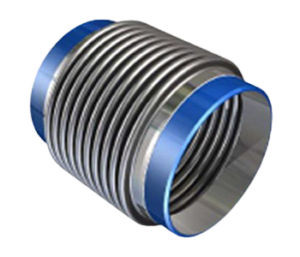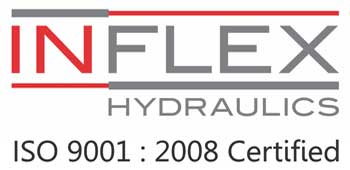Stainless Steel Expansion Joints Maintenance And Inspection
 Stainless Steel Expansion Joints Maintenance-Expansion joints play an important role in many industries. They are designed to absorb thermal expansion or contraction, structural movement, and vibrations. In doing so, expansion joints help extend the lifespan of pipes, vessels, and other components.
Stainless Steel Expansion Joints Maintenance-Expansion joints play an important role in many industries. They are designed to absorb thermal expansion or contraction, structural movement, and vibrations. In doing so, expansion joints help extend the lifespan of pipes, vessels, and other components.
Stainless steel expansion joints are popular due to their exceptional strength, corrosion resistance, and durability. This article will explore the best practices for maintenance and inspection of stainless steel expansion joints.
With regular inspections and maintenance, stainless steel expansion joints can provide long-lasting service. Indeed, they can be an invaluable asset in any industrial environment.
Understanding Expansion Joints
Expansion joints are mechanical devices used to absorb the thermal expansion and contraction of different materials, such as stainless steel, and to reduce stress on piping systems.
Expansion joints are classified based on the type of material used, such as metallic, non-metallic, and composite expansion joints. Each type of expansion joint offers unique features and benefits, making them suitable for different applications.
Stainless steel expansion joints are the most common type used due to their superior strength and corrosion resistance. The selection of the right type of expansion joint material is critical for the efficiency and longevity of the system.
Stainless steel expansion joints are suitable for a wide range of temperatures and pressures, and they are compatible with most common fluids and gases. Stainless steel is also highly durable and resistant to corrosion and other environmental factors that can cause damage to the piping system.
Regular maintenance and inspection of stainless steel expansion joints is important to ensure that they perform properly and safely. This includes checking for signs of wear and damage, and ensuring that all components are securely connected. Additionally, the expansion joints should be replaced when they have exceeded their useful life, as this can help prolong the life of the system as a whole.
Benefits of Stainless Steel Expansion Joints
Benefiting from its superior corrosion resistance, how can the utilization of stainless steel in expansion joints be leveraged to maximize system performance? The use of stainless steel expansion joints offers a number of advantages which include improved system durability, lower installation and maintenance costs, and improved overall system performance.
Stainless steel expansion joints can provide superior corrosion protection when exposed to corrosive environments, as well as improved wear protection for longer expansion joint life. Stainless steel expansion joints are designed to absorb thermal expansion, shock, vibration, and misalignment. They can also help reduce the potential for leakage and contamination of the system.
The use of stainless steel in expansion joints can also provide an improved level of safety since no additional materials or coatings are required to protect the joints from corrosion.
The utilization of stainless steel in expansion joints can offer a number of key benefits for system performance, including improved durability, lower installation and maintenance costs, better corrosion protection, improved wear protection, and improved safety. These advantages can be leveraged to maximize system performance and provide long-term reliability.
General Maintenance Practices
Regularly assessing the condition of components can help ensure the long-term reliability of a system by proactively identifying potential issues before they become major problems.
For this reason, preventive maintenance and regular inspections of stainless steel expansion joints are essential for optimal performance and extended service life. A comprehensive approach to maintenance and inspection should include such activities as visual inspection, checking fasteners for tightness, measuring the dimensions of the expansion joint, and checking for signs of wear or damage.
To ensure the effectiveness of the preventive maintenance and inspection process, it is important to document all findings and to take corrective action when necessary. This may include tightening fasteners, replacing worn or damaged components, and adjusting the expansion joint as needed.
Furthermore, if any problems are found during the inspection, it is important to investigate the root cause to ensure that similar issues do not arise in the future.
All maintenance and inspection activities should be performed in accordance with the manufacturer’s instructions to ensure optimal performance and reliability of the stainless steel expansion joint. Additionally, it is important to document all maintenance and inspection activities for future reference and to maintain records of all corrective action taken to help prevent future problems.
Identifying Damaged Expansion Joints
Identifying signs of damage on an expansion joint can help identify potential issues before they become major problems. It is important to regularly inspect stainless steel expansion joints for any nearly invisible damage that could lead to future complications.
In order to do this, it is recommended to inspect the joints from multiple angles and focus on areas that are more vulnerable to wear and tear. Evaluating the condition of the joints is an important step in the maintenance process as it can help identify any minor issues that can be addressed before they become bigger problems.
Inspectors should look for signs of corrosion, cracks, or other structural damage that can affect the performance of the expansion joint. It is important to regularly inspect the joints for any signs of damage or deterioration that could lead to leaks or other costly issues. The key is to identify any damage quickly, so that problems can be addressed before they become more serious. It is also important to check for any loose or missing fasteners that could cause the joint to become unstable or lead to more serious issues.
Regular inspections are essential for preventing costly repairs and ensuring the expansion joint is functioning properly. It is important to regularly inspect the joints to ensure any minor issues are addressed before they become more serious. Furthermore, it is important to inspect the expansion joint from multiple angles to ensure any potential issues are identified and addressed quickly.
Repairs and Replacement
Properly repairing or replacing damaged expansion joints is essential for ensuring structural integrity and avoiding major problems. To ensure the longevity of expansion joints, preventive care is necessary. This includes inspecting the joints on a regular basis for signs of wear and tear, and ensuring that protective coatings are applied where needed. Additionally, rust prevention is a key factor in preserving the structural integrity of the expansion joints. Properly cleaning and applying a protective coating to the joints regularly can help to prevent rust and corrosion.
When it comes to repairing or replacing damaged expansion joints, the method used will depend on the type and severity of the damage. Minor repairs can be done with materials such as sealants, gaskets, or tape. More extensive damage may require the complete replacement of the joint. It is important to use the proper materials and techniques when replacing or repairing expansion joints to ensure proper sealing and a safe and secure connection.
When repairing or replacing expansion joints, it is important to use only high-quality materials that are designed for the specific application. This will ensure that the joints are properly sealed and provide the necessary structural integrity. Additionally, it is important to follow all applicable safety standards and ensure that the joints are properly installed and inspected.
Taking all of these steps will help to ensure that the expansion joints are properly maintained and will provide long-lasting protection.
Conclusion
The use of stainless steel expansion joints provides numerous benefits to the structure. Maintenance and inspection are necessary for upkeep and to ensure that the joint is functioning properly.
The process of inspection should be thorough and methodical, with all potential areas of damage being examined. When damaged expansion joints are identified, repairs or replacements should be made in a timely fashion to ensure that the structure remains safe and secure.
By understanding the importance of maintenance and inspection, the longevity of the stainless steel expansion joint can be maximized, ensuring its continued use for many years to come.
The juxtaposition of the joint’s strengths and weaknesses in this manner creates a vivid image of the necessity for regular upkeep and inspection.
